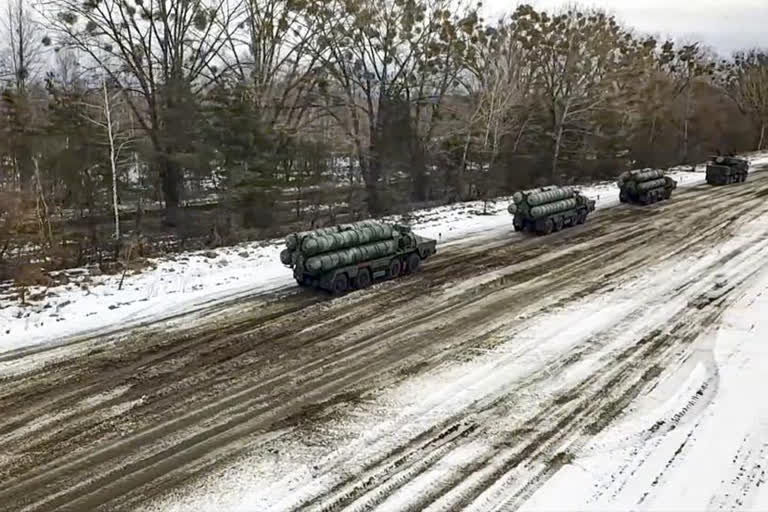New Delhi: With the deployment of major Russian naval assets including the Slava class cruisers in the Mediterranean and the Black Sea as recently as Wednesday while land forces are mobilized in and around the borders with Ukraine like never before, Russia’s strategy in the Ukraine crisis is becoming much clear—to regain its eroded status of a superpower. In international diplomacy and strategic thinking, being sidelined is akin to a war lost. Among other things, international diplomacy is about staying relevant and maintaining relevance. And this is what the Russian position and the ongoing huge military buildup in and around Ukraine is all about.
Regaining the lost glory of the erstwhile Soviet Union is important for Russia because inherent in that status is a fortification of its borders by buttressing its buffers including extending and enhancing its spheres of influence in the traditional buffer zones of Poland, Romania, and Bulgaria in the face of an increasingly intrusive US-led NATO that has been eyeing an eastward march. Besides strengthening its buffer areas and putting its military might in full strength, Russia hopes to confront the NATO head on and reclaim the earlier status that was frittered away by the then Russian President Mikhail Gorbachev.
The coming down of the Berlin Wall in 1989 subsequently followed by the collapse of the Soviet Union in the next few years marked the end of the Cold War that began in 1947 just after the end of the Second World War. It was the Cold War that led to the formation of the East Bloc and the West Bloc, led respectively by the erstwhile Union of Soviet Socialist Republic (USSR) and the US—both acknowledged as superpowers in a bipolar world.
Also Read: Diplomats meet in Moscow and Berlin as Russian drills held
The disintegration of the USSR hastened the demise of Russia as a declining economic power although militarily it was still considered a power to reckon with largely because of the military-industrial complex it had built up over the decades which continued to produce powerful and fine weaponry that found very eager buyers. With the Russian weakness evident for all, NATO continued to nibble away at the vestiges of the traditional Russian frontiers even as the US flaunted its status as the sole superpower on earth. But concomitant with these developments was the quiet and gradual rise of China, a development that was brought to prime focus by the regime of US President Donald Trump.
Trump glossed over Russia even as he declared China as the ‘numero uno’ adversary. This reflected in several key changes. A changed US strategic policy, with India in the centre-piece to counter a powerful China, led to the rechristening of the US Asia-Pacific military command to Indo-Pacific command even as a ‘Quadrilateral Security Dialogue’ commonly referred to as the ‘Quad’—comprising US, India, Australia and Japan—took shape. Therefore, the Russian effort in Ukraine is to gain respectability by demonstrating intent to showcase and hopefully not, use its military power. Ukraine provides the perfect opportunity to Russia to redeem itself and position itself as a superpower again.
But in doing so, it would have to take the spotlight off China and refocus it on itself—and it may have already achieved a certain measure of success it that, because China’s tension over Taiwan and the blurry border with India seems to have receded into the background as the blowing crisis over Ukraine has taken over.




